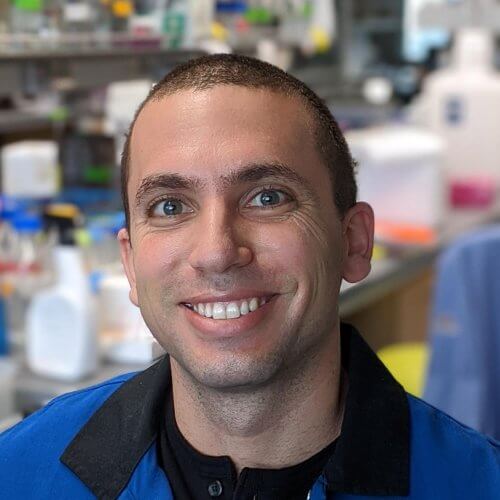

Nir Hananya

Our lab explores using genetically encoded photocatalysts to conduct chemical reactions in living systems. Based on our unique ‘in vivo photochemistry’ approach, we design innovative chemical tools for investigating various biological phenomena. For example, we recently developed LITag, a photo-proximity labeling method that is used to study protein-protein interactions in living cells; that’s only the beginning!
We are also interested in developing and applying Chemical Biology tools for studying chromatin and epigenetics.
We have open positions for ambitious graduate/undergraduate students and postdocs. Research in the Hananya lab is multidisciplinary and involves organic synthesis, protein engineering and semi-synthesis, molecular biology, and quantitative proteomics. We are committed to diversity, equity, and inclusion, and welcome researchers from all backgrounds.
I studied Chemistry and Biology for my bachelor’s degree at Tel Aviv University. I was quickly charmed by the clarity and perfection of Chemistry and by the intricate wisdom of Biology. Since then, my interest has remained in both scientific areas and the relationship between them. I, therefore, became a Chemical Biologist.
I did my PhD with Doron Shabat at Tel Aviv University, where I developed novel luminescent compounds for bioimaging applications. I then moved to do my postdoctoral research with Tom Muir at Princeton University, where I studied how chemical modifications of DNA-interacting proteins affect the process of DNA repair. I also developed a photochemistry-driven technology for mapping interactions between proteins.
In October 2023 I returned to Israel as an assistant professor to open a new lab at the Schulich Faculty of Chemistry in the Technion.
- A genetically encoded photoproximity labeling approach for mapping protein territories, https://www.pnas.org/doi/10.1073/pnas.2219339120
- Synthesis of ADP-Ribosylated Histones Reveals Site-Specific Impacts on Chromatin Structure and Function, https://pubs.acs.org/doi/pdf/10.1021/jacs.1c05429
- Interrogating epigenetic mechanisms with chemically customized chromatin, https://www.nature.com/articles/s41576-023-00664-z
